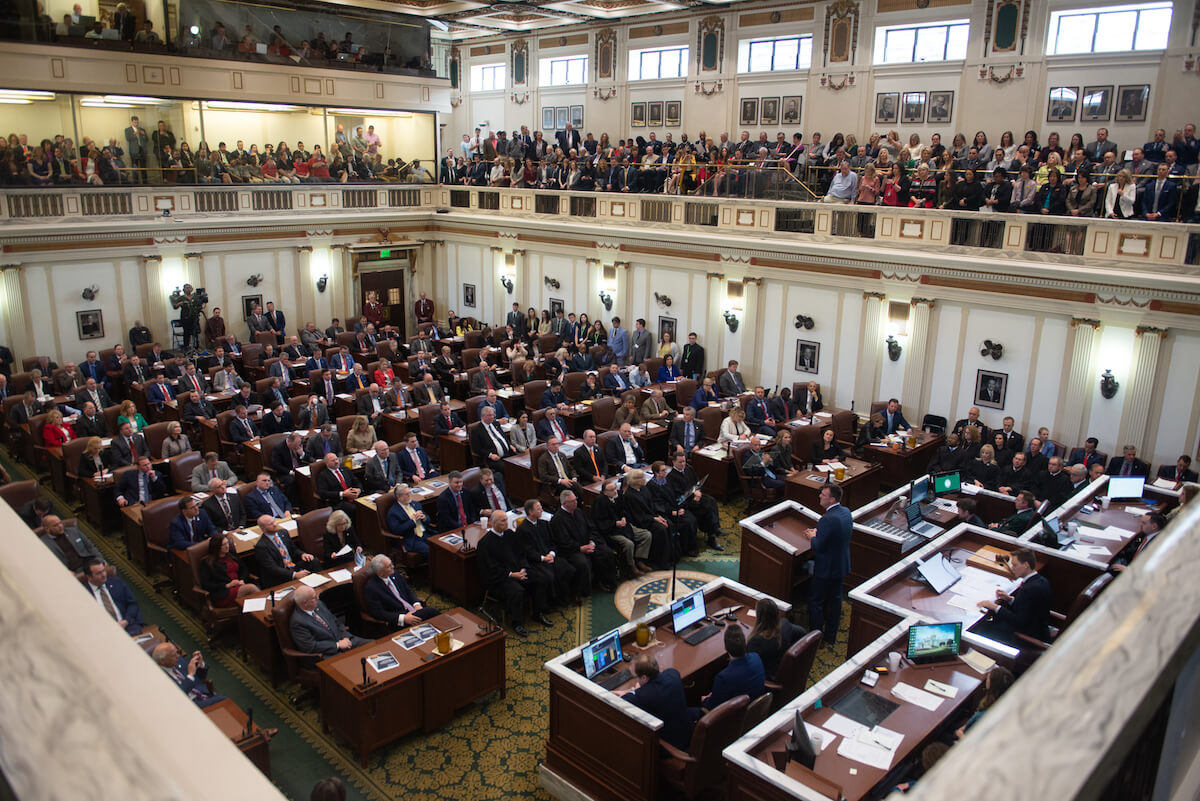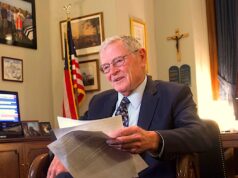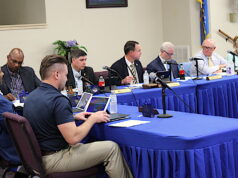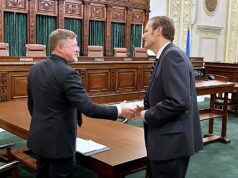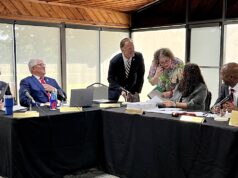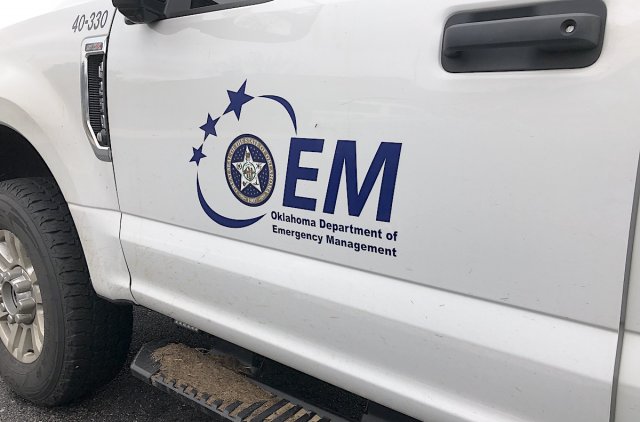

Oklahoma Gov. Kevin Stitt has declared a “health emergency,” triggering a state statute that requires a special session of the Oklahoma Legislature to convene 8 a.m. Monday, April 6.
Section 6405 of Title 63 notes that when the governor declares a health emergency “the State Legislature shall automatically be called into Special Session at 8:00 a.m. on the morning of the second day following the date of such declaration for the purpose of concurring with or terminating the catastrophic health emergency.”
Stitt’s executive order was posted online around 9 a.m. this morning, but no additional information was immediately released. The governor’s office distributed a press release shortly after the posting of this article.
“Now is the time to align all public health entities in the state as we work together to prepare for a surge in demand on our hospitals,” Stitt said in the release. “This will allow us to coordinate resources and ensure all Oklahomans have the best access to the medical care they need.”
Stitt’s order (embedded below) described his actions.
“As COVID-19’s impact continues to evolve, it is important to take measures to protect all Oklahomans against this threat,” Stitt wrote. “Therefore, I believe, after consultation with numerous health experts within my administration, that it is now time to declare that a health emergency exists in the State of Oklahoma, and the provisions of the Act set forth in Oklahoma Statutes [Title 63 Sections 6101 et seq.] should be activated.”
Section 6403 of Title 63 spells out the result of the governor declaring a “health emergency”:
A. The declaration of a state of catastrophic health emergency shall activate the disaster response and recovery aspects of the state, local, and inter-jurisdictional disaster emergency plans in the affected political subdivisions or geographic areas. Such declaration authorizes the deployment and use of any forces to which the plans apply and the use or distribution of any supplies, equipment, and materials and facilities assembled, stockpiled, or available pursuant to this act.
It also lists powers granted to the governor during a health emergency:
1. Suspend the provisions of any regulatory statute prescribing procedures for conducting state business, or the orders and rules of any state agency, to the extent that strict compliance with the same would prevent, hinder, or delay necessary action (including emergency purchases) by the public health authority to respond to the catastrophic health emergency, or increase the health threat to the population;
2. Utilize all available resources of the state government and its political subdivisions, as reasonably necessary to respond to the catastrophic health emergency;
3. Transfer the direction, personnel, or functions of state departments and agencies in order to perform or facilitate response and recovery programs regarding the catastrophic health emergency;
4. Mobilize all or any part of the National Guard into service of the state. An order directing the National Guard to report for active duty shall state the purpose for which it is mobilized and the objectives to be accomplished;
5. Provide aid to and seek aid from other states during the catastrophic health emergency in accordance with any interstate emergency compact made with this state; and
6. Seek aid from the federal government for the catastrophic health emergency in accordance with federal programs or requirements.
It also outlines the responsibilities of the coordinating public health authority, which Stitt declared as the Oklahoma State Department of Health.
RELATED
House outlines Capitol COVID-19 protocols by Tres Savage
The governor’s press release noted that some of the regulations he will ease are intended to increase health professional staffing numbers and provide first responders with more information about when they are responding to a COVID-19 call that requires personal protective equipment.
“This declaration also gives the governor the authority to allow health care professionals who have left the workforce to quickly rejoin the front lines against COVID-19 and protect first responders by helping them manage their personal protective equipment (PPE),” the release stated. “By loosening some restrictions, first responders will be able to know if the home they are dispatched to has a resident who has tested positive for COVID-19. Patient names and other identifying information will still be restricted.”
Additionally, Stitt’s order implements Section 6802 of Title 63, which specifies a series of reasons that the governor can “transfer from any fund available to the governor in the State Treasury sums of money as may be necessary during a state of catastrophic health emergency.” Any transferred money must be repaid as soon as possible, according to the statute.
Other components of health emergency declaration
Other operative components of Stitt’s executive order include his special session call:
Pursuant to the power and authority vested in me by Section 7 of the Article VI of the Oklahoma Constitution, I hereby convoke the First Special Session of the 57th Legislature to convene at the State Capitol at 8 a.m. Central Daylight Time on the second business day following the date of this order, for the sole purpose of concurring with or terminating this declaration of health emergency.
With the Legislature already preparing to address an anticipated revenue failure, lawmakers could also spend next week in regular session to finalize the Fiscal Year 2021 budget.
Stitt’s order references a state statute noting his health emergency declaration “does not restrict any person from complying with federal law or regulations.” It also notes that rules and regulations will not apply to members of the Oklahoma National Guard who may become activated in support of COVID-19 response:
For the duration of the state health emergency declared herein, neither the provisions of 63 O.S. Section 1-504 [through] 1-506 nor any administrative rule, regulation or procedure pertaining to a state, county or municipal quarantine shall apply to personnel of the Oklahoma National Guard activated in support of the COVID-19 response in Oklahoma. In lieu of such requirements, the Adjutant General shall implement appropriate quarantine procedures, in accordance with established Department of defense protocols, applicable to all Oklahoma National Guard personnel activated during the COVID-19 response.
Hours after Stitt’s order came out Thursday morning, the Oklahoma State Department of Health released its daily report of COVID-19 cases: 879 positive tests, 257 hospitalizations and 34 deaths. Those numbers reflect increases of 160 positive tests, 38 hospitalizations and four deaths over the previous day.
Follow @NonDocMedia on:
Read the full executive order and special session call
 Loading...
Loading...
(Update: This story was updated at 10:18 a.m. Thursday, April 2, to include information from the governor’s press release. It was updated again at 11:35 a.m. to include more information. It was updated again at 2:22 p.m. to clarify reference to the National Guard.)








